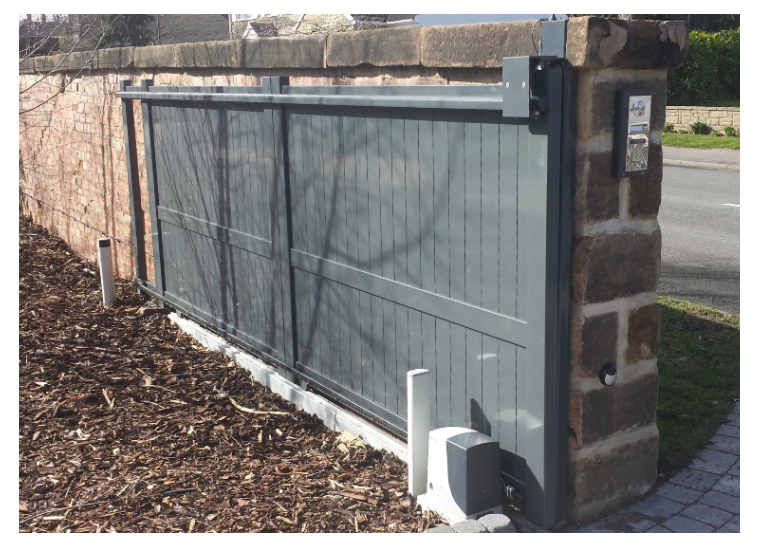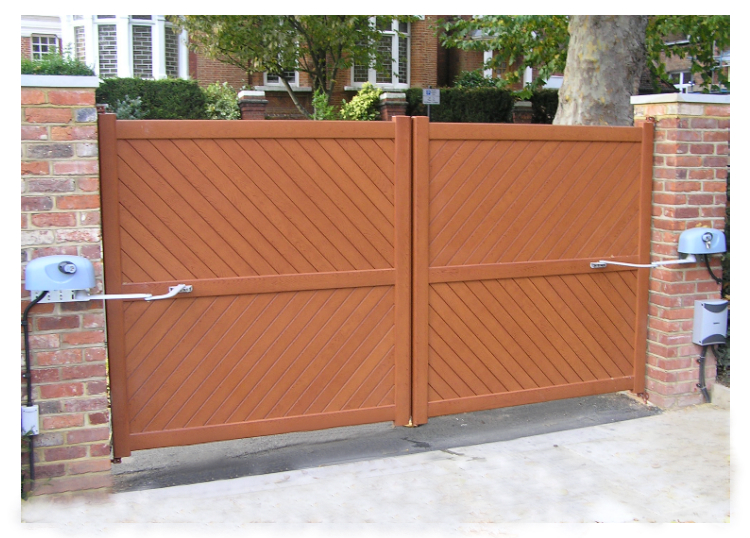-
Your shopping cart is empty!
Menu
- Gate Automation +
- Access Control +
- Gate Safety +
- Accessories +
- Other Automation +
- Aluminium Gates +
- Manufacturers +
- Special Offers +
- App +
- Support +
.
Driveway gates can be manual gates or automatic gates. With gate automation installed, gates don’t need to be opened and closed by hand. Instead, powerful gate motors do the work for you. Clever electronic controls manage how quickly and how far the automated gates open and close to make the driveway either completely clear or completely blocked off.
Hand-held remote-control transmitters that you can keep in a pocket or handbag instruct the gates to open or close at the touch of a button. Access control systems let you choose who to let through your gates safely from inside your home.
Gates at the entrance of your driveway give you a way to restrict who can drive onto your property. They keep children and pets safely away from traffic and passers-by, and they help to discourage impulse burglars.
But without gate automation, manual gates are often left open. It just gets to be too much effort to keep opening and closing them by hand. And if they’re left open, they’re not doing their job.
However, automatic gates can be opened and closed at the touch of a button. When you leave or come home, you don’t have to get out of your car to operate your gate automation system. If you have visitors, you can open automated gates from inside your home to let them in. Or, if the callers are unwelcome, you can instruct your automatic gates to close or stay closed to keep these undesirables off your property.
With the right access control system, you can even monitor and operate automatic gates from anywhere in the World*.
 Automatic gates come in many designs but for driveway gate automation systems there are two common configurations. These are either sliding gates or swing gates.
Automatic gates come in many designs but for driveway gate automation systems there are two common configurations. These are either sliding gates or swing gates.
So what are the advantages and disadvantages or each type of gates?
Sliding gates are usually made up of one, larger gate that slides across the driveway entrance. Swing gates are usually twin gates that open in the middle and swing open into the driveway. However, sliding gates can be made to look like two swing gates.
Automatic swig gates need space to move through as they open and they need a level or falling driveway or they will ground on a rising drive.
Sliding gate automation systems move the gate sideways away from the drive entrance so they need space to one slide that is longer than the width of the gate.
Where space on the driveway is limited, sliding gates are often the perfect choice. Where there is little or no space to the side of the gate entrance, swing gates may be more suitable than sliding gates.
Automatic sliding gates slide across the gate entrance on rollers running along a track laid between the gate pillars or posts and off to one side.
Automatic swing gates pivot on hinges mounted on sturdy posts, pillars or walls.
Sliding gates are moved along the track by a motor with a toothed cog on its side. This meshes with a toothed rack mounted along the length of gate and moves the gate as it is rotated.
Swing gates are moved by motors mounted on the pillars or sunk underground, by mechanical arms and rods that connect to the gate. This is often inefficient as the force applied to the gate is usually close to the hinge rather than at the opening edge where much less force is required to move the gate. When swing gates have no gaps in their surface (fully boarded), a strong wind blowing on them will significantly increase the force required to open them.

To open fully, swing gates move a shorter distance than a sliding gate. With a 4m gap between pillars, a sliding gate moves more than 4m, while the opening edge of each swing gate moves 3.141m to open 90 degrees. Despite the differences in motion type (sliding vs rotating) and motor action, swing gates are slightly quicker to open because of this.
Any gate automation system installed without due consideration for its use, who will have access to it, and where the possible danger areas are, is not safe.
Sliding gates move across stationary surfaces so they have the potential to cause shearing and crushing injuries. Swing gates can cause pinching and crushing injuries at the hinges and impact and crushing injuries as the gates swing open.
Sliding gates should not be installed on slopes as they require more force to push uphill and higher breaking force to stop them accelerating downhill.
Swing gates and sliding gates both have risks but a qualified installation engineer who fully understands the unique safety requirements of your installation will assemble and install the safest possible gate system which type of gates you choose.
* GSM access control systems allow you to use your smartphone to view who is at the gate (with video intercom), speak to them and open your gates from anywhere in the World as long as you have a mobile signal or Wi-Fi access to the internet.